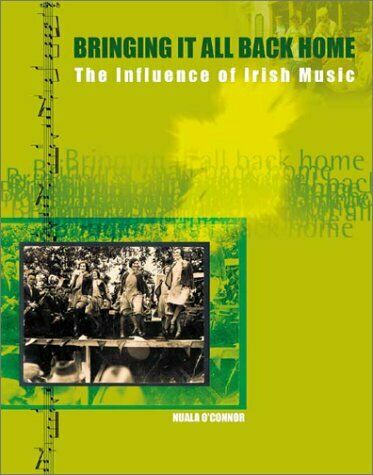 Originally written as a companion to an RTE/BBC television series on Irish music, this book has lots of photos, tidbits, and history. This is a book I wish someone had handed me 10 years ago when it first came out. Traditional music of all sorts was then a new love, and I found Irish music in particular to be both fascinating and arcane, full of all sorts of oddities, rules and bits of lore that everyone else seemed to know. As my budget was limited and more oriented toward going out and hearing music rather than buying it to listen to at home, I just smiled and nodded, and kept listening.
Originally written as a companion to an RTE/BBC television series on Irish music, this book has lots of photos, tidbits, and history. This is a book I wish someone had handed me 10 years ago when it first came out. Traditional music of all sorts was then a new love, and I found Irish music in particular to be both fascinating and arcane, full of all sorts of oddities, rules and bits of lore that everyone else seemed to know. As my budget was limited and more oriented toward going out and hearing music rather than buying it to listen to at home, I just smiled and nodded, and kept listening.
This book covers everything from how session tunes are structured, to the history of the repression of set dancing by parish priests, to the performance of sean nos singing, to the development of key professional folk musicians.
Because it goes back in time, it provides the roots of Irish music as it came up through time, from before recorded music. It gives extensive coverage to the relationship between Irish and North American music, although Canada is sadly ignored, which is a shame. Given that Quebec was one of the three major ports of call for famine-era immigration (the others being New York and New Orleans), and the subsequent influence of Irish music on Quebecois traditions, it seems odd that this influence is ignored.
However, the treatment of Appalachian traditions is well done, as is the influence of late nineteenth century Irish immigration on American music. The book also does a good job of presenting the opposing influences of mass media and preservationist efforts in twentieth century Ireland, documenting the change from music as one of the few options for entertainment, to traditional music as one choice among many. It has a wonderful discussion of the “who’s who” of the folk music revival of the 1970s, a roster of musicians that had a huge influence on many people now listening to and playing Irish traditional music.
There are several features that may irritate those more steeped in Irish traditional music, like the inclusion of U2 and Sinead O’Connor, who receive as much attention as groups like Planxty or Clannad. The television special also featured many collaborations between Irish musicians and players in other traditions, like country singer Rikky Skaggs and klezmer musician Andy Statman that highlight the similarities or common roots of Irish traditions to other popular traditions. While this makes for great footage, it can be distracting in a book of this sort. Now, an enhanced CD-ROM would be a different story, but we are a few years away from such items being put into mass production.
Overall, the treatment of the material is on an introductory level, making it a perfect gift for the newly enamoured, but less useful for someone who has absorbed things along the way. It is also shorter and has a longer time line than a Rough Guide or something more oriented toward recording artists, so it will be more helpful for those who may be considering beginning to play the music. Bringing it All Back Home is highly recommended for those new to Irish traditional music — perhaps something for old hands to loan out to the newly converted.
(Merlin, 2nd ed., 2001)
